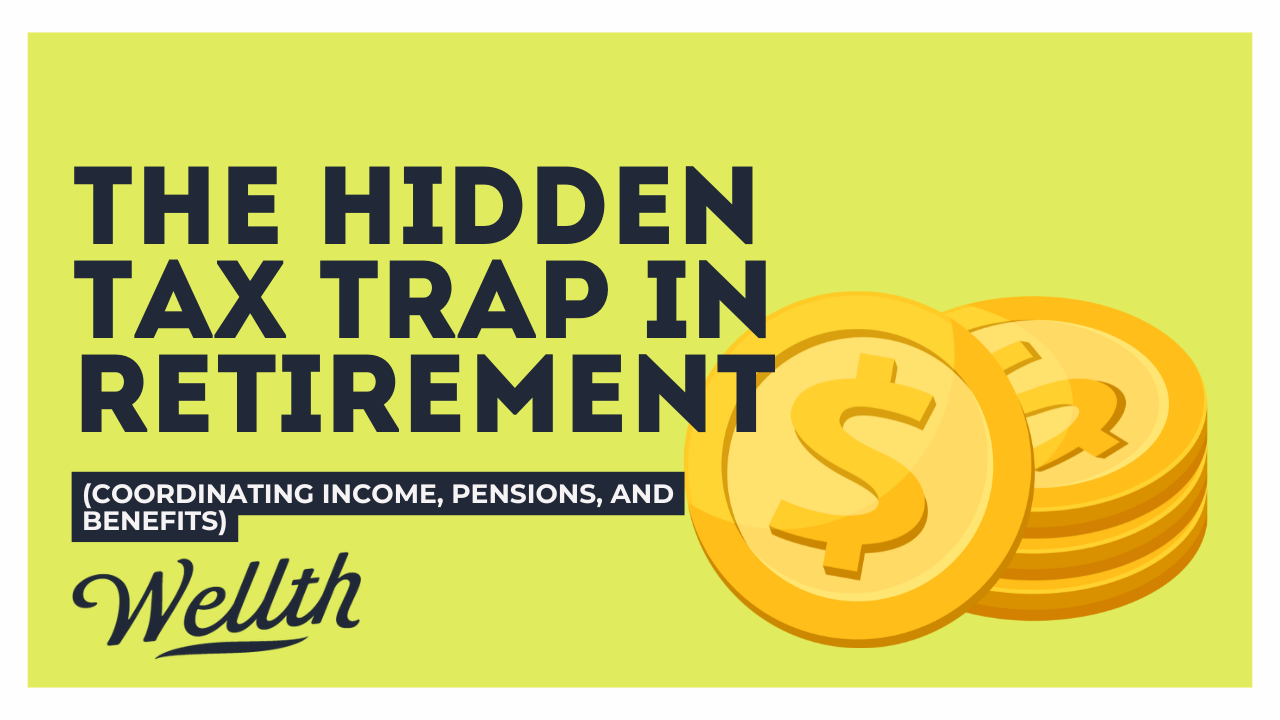The Retirement Tax Bomb No One Warned You About
How income stacking can quietly drain six figures from your nest egg—and what to do now to protect it.
For most of your working life, investing is simple: save as much as you can, let markets do their work, and worry about taxes later.
But by your mid-fifties, “later” is around the corner. Retirement is no longer about piling up assets—it’s about drawing income. And here’s the catch: how you draw that income determines how much of it you actually keep.
The Problem: Income Stacking
Every dollar you receive in retirement stacks on top of the last one. Your defined benefit pension, government benefits, and portfolio withdrawals all combine to create your taxable income.
That can lead to two costly surprises:
Clawbacks. In Canada, Old Age Security (OAS) begins to shrink once your income crosses roughly $90,000. In the U.S., up to 85% of Social Security is taxable if other income is too high.
Bracket creep. Large registered account withdrawals later in life can push you into higher marginal tax brackets, leaving you with less after-tax income than expected.
In other words: the order and timing of your withdrawals matter just as much as the size of your portfolio.
Timing Is Everything
Should you take CPP or Social Security early, or delay for the larger payout?
Delaying benefits can boost lifetime income, but forces you to draw more heavily from your portfolio in the meantime.
Taking benefits early reduces government checks permanently but allows more of your portfolio to compound.
There’s no one-size-fits-all answer. The optimal strategy depends on health, longevity in your family, and whether your investments can generate reliable cash flow without excessive risk.
Take the first step toward smarter investing today. Get your free financial plan with no obligation.
Why wait weeks for an appointment? We connect you instantly with a Canadian financial advisor who will create a personalized financial plan for you — at no cost.
Portfolio Withdrawals: A Balancing Act
Think of your accounts as different tax buckets:
Registered accounts (RRSPs): Heavily taxed at withdrawal. Drawing these earlier—before pensions and government benefits pile on—can smooth income over time.
Tax-free accounts (TFSA): The crown jewel. Withdrawals here don’t affect tax brackets or benefit clawbacks. Often best saved for last.
Taxable accounts: Capital gains and eligible dividends are taxed more favorably. These can be a flexible bridge in years when you want to keep other income low.
The sequence matters. Pull too heavily from one bucket at the wrong time and you may find yourself paying far more tax than necessary.
The Pension Puzzle
If you’re fortunate enough to have a defined benefit pension, congratulations—you own a personal annuity. But that guaranteed income comes with a cost: it crowds out flexibility.
A pension that pays $50,000 a year may sound ideal, but it can leave little room for additional withdrawals without bumping you into higher brackets. Coordinating pension income with government benefits and portfolio draws is essential to avoid overpaying the taxman.
Conducting the Orchestra
Retirement income is less about chasing yield and more about orchestration. Each source—pensions, government benefits, dividends, bond coupons—plays a different instrument. Managed separately, they create noise. Conducted together, they produce harmony.
The goal is simple:
Smooth income over decades.
Stay below clawback thresholds where possible.
Preserve flexibility for unexpected expenses.
The Takeaway
At 55, you still have time to set the stage. The difference between coordinating and not coordinating your income sources can amount to tens, even hundreds of thousands of dollars over a retirement.
Your investments may power the engine, but your strategy decides how much fuel you keep. In retirement, the winners aren’t just the ones with the biggest portfolios—they’re the ones who keep the most after taxes.
Disclaimer: This analysis is for informational purposes only and does not constitute financial advice. Investors should conduct their own due diligence and consult with a financial advisor before making investment decisions.


